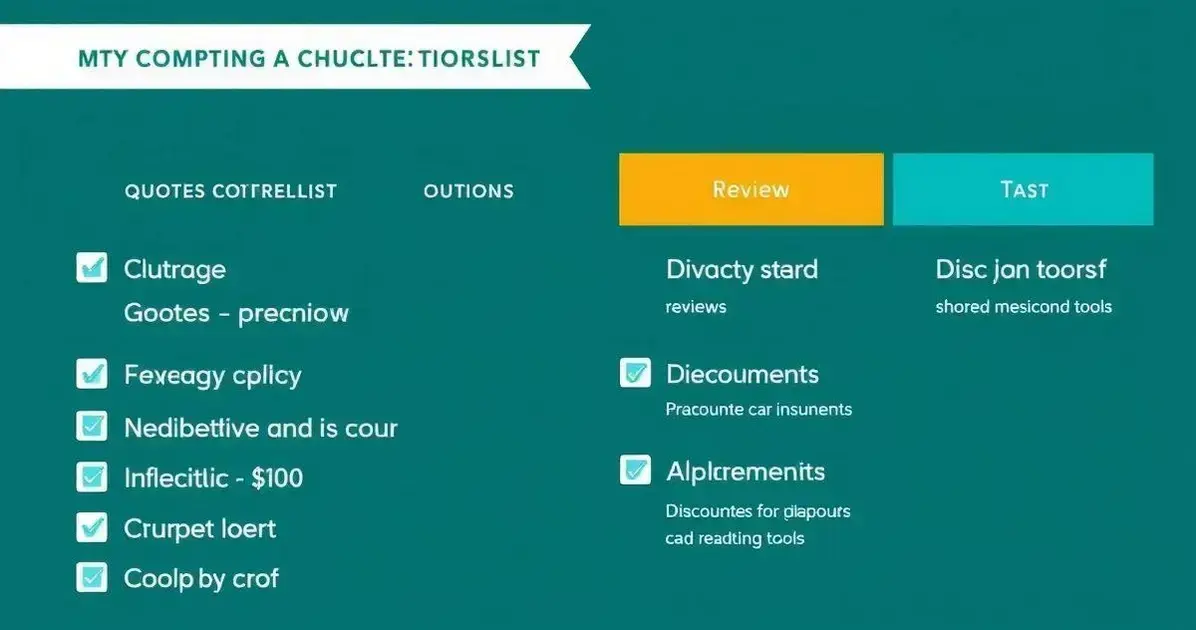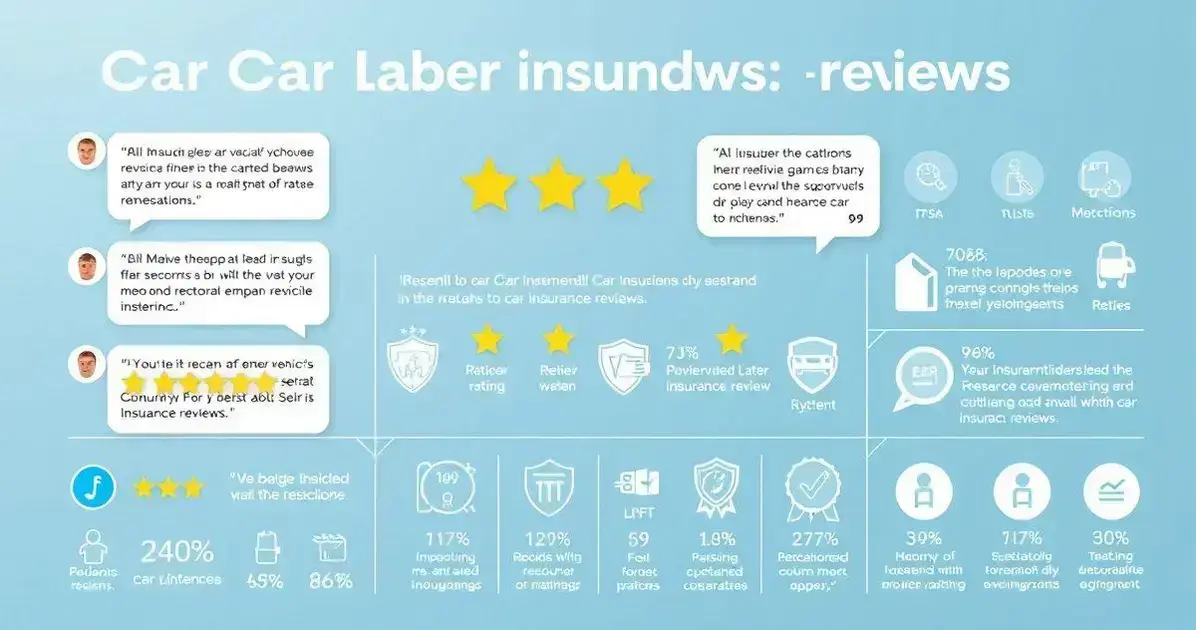When it comes to choosing the right car insurance, making an informed decision can save you money and provide essential coverage.
With numerous policies available, it’s vital to understand the different types of insurance, the factors affecting premiums and how to compare options effectively.
In this article, we will detail tips for finding discounts, common mistakes to avoid, and the importance of reviews, settling claims, and more to help you navigate this critical choice.
Understanding Different Types of Car Insurance
Choosing the right car insurance begins with understanding the different types available. Each type serves a unique purpose and knowing them can help you make an informed decision.
Liability Insurance
Liability insurance is mandatory in most states. It covers damages to other people’s property and medical costs resulting from accidents where you are at fault. This is essential for protecting your finances against lawsuits.
Collision Coverage
Collision coverage pays for damage to your own vehicle after hitting another car or object, regardless of fault. While not required by law, it can be crucial for newer or more expensive cars.
Comprehensive Coverage
Comprehensive coverage includes protection against events other than collisions. This may involve theft, fire, vandalism, or natural disasters. It’s a helpful addition for protecting against unforeseen events.
Personal Injury Protection (PIP)
PIP covers medical expenses for you and your passengers, regardless of fault. It often includes lost wages and funeral costs, making it a beneficial addition for extra peace of mind.
Uninsured/Underinsured Motorist Coverage
This type of insurance protects you if you are involved in an accident with someone who doesn’t have insurance or doesn’t have enough insurance to cover the damages.
Gap Insurance
Gap insurance is particularly useful for those who owe more on their car loan than the vehicle is worth. In the event of a total loss, it covers the difference between your insurance payout and the remaining loan balance.
Understanding these different types of car insurance is crucial for making decisions that suit your financial needs and protect you adequately on the road. Knowing what each type covers ensures that you choose the best options for your unique situation.
Factors Affecting Car Insurance Premiums
Your car insurance premium can change based on many factors. Understanding these can help you take control of your costs.
Driving History
Your driving record is one of the main factors insurance companies consider. If you have a clean record with no accidents or tickets, it’s likely you will pay a lower premium. On the other hand, a history of accidents or violations may increase your rates significantly.
Vehicle Type
The type of car you drive impacts your insurance cost. More expensive cars or those with higher theft rates tend to have higher premiums. Additionally, cars with high safety ratings may qualify for discounts, helping reduce your cost.
Location
Your location can also affect your insurance premium. Areas with high traffic, crime rates, or natural disasters may lead to higher costs. Conversely, living in a less populated or safer area could result in lower premiums.
Age and Gender
Insurance companies often assess risk based on your age and gender. Younger drivers, particularly males, tend to pay higher premiums due to their inexperience and higher accident rates.
Credit History
Your credit score can also influence your auto insurance premium. Generally, a higher credit score suggests responsible behavior and may lead to lower rates. Insurers believe that those with better credit are less likely to file claims.
Coverage Amount
The level of coverage you choose directly impacts your premium. Higher deductibles can lower your insurance costs, while adding optional coverages can raise them. Be sure to assess what you really need.
Policy Discounts
Finally, insurance companies offer various discounts that could affect your premium. These might include safe driver discounts, multi-policy discounts, or discounts for completing driving courses. Always ask your insurer about available savings.
By understanding these factors, you can take steps to manage your car insurance premiums wisely and find the best coverage suited to your needs.
How to Compare Car Insurance Policies

When it comes to choosing the best car insurance, comparing different policies is essential. Here are some steps to guide you.
1. Gather Multiple Quotes
First, collect quotes from several insurance companies. Use online comparison tools or contact agents directly. Having multiple quotes allows you to see a range of prices and coverage options.
2. Understand Coverage Options
Ensure you understand what each policy covers. Look for essential coverages like liability, collision, and comprehensive insurance. Identifying what you need will help you compare policies more effectively.
3. Check Premium Costs
Compare the premiums you’ve gathered. Don’t just look at the price. Think about what is included in each policy. Sometimes, a cheaper option might leave out important coverages.
4. Review Deductibles
Take note of the deductibles associated with each policy. A higher deductible usually means a lower premium but be sure you can afford the out-of-pocket cost in case of a claim.
5. Assess Discounts
Ask each insurer about available discounts. Factors such as being a safe driver, bundling policies, or taking defensive driving courses can affect your premium significantly.
6. Read Reviews and Ratings
Look at customer reviews and ratings for the insurance companies you are considering. Reliable companies often have excellent customer service and support, making the claims process smoother.
7. Consult an Insurance Agent
If you find comparing policies overwhelming, consider consulting an insurance agent. They can help you understand complex terms and customize a policy that fits your needs.
By following these steps, you can effectively compare car insurance policies and select the one that offers the best value for your coverage needs.
Tips for Finding Discounts on Car Insurance
Finding discounts on car insurance can significantly lower your premiums. Here are some practical tips to help you save money.
1. Shop Around
Don’t settle for the first quote you receive. Different insurance companies offer various discounts, so it’s beneficial to compare several options. Use online tools to gather multiple quotes quickly.
2. Bundle Your Policies
If you have multiple insurance needs, consider bundling your car insurance with homeowners or renters insurance. Most companies offer significant discounts for customers who bundle policies.
3. Maintain a Clean Driving Record
A clean driving record is vital. Avoiding accidents and violations can often qualify you for safe driver discounts, which may lower your premium over time.
4. Take a Defensive Driving Course
Many insurers reward drivers who complete defensive driving courses. These courses enhance your driving skills and can lead to premium reductions.
5. Join a Professional Organization
Membership in certain professional organizations or alumni groups can provide access to exclusive insurance discounts. Inquire about potential savings associated with community affiliations.
6. Ask About Discounts
Always ask your insurance agent about potential discounts. It’s a simple step that can uncover savings you might not know about, including discounts for low mileage or being a student.
7. Review Your Coverage Regularly
As your circumstances change, review your coverage. For example, if you drive less than in previous years, you may qualify for a lower premium. Keeping your policy updated ensures you’re not overpaying.
Finding discounts requires a bit of effort, but the savings can be very worthwhile. Regularly check for new discounts, and stay informed on how best to maximize your savings.
Common Mistakes to Avoid When Choosing Car Insurance
When selecting car insurance, avoiding common mistakes can save you time and money. Here are key pitfalls to watch out for.
1. Not Shopping Around
One of the biggest mistakes is settling for the first quote. Always compare multiple insurance providers to find the best rate and coverage for your needs.
2. Ignoring the Fine Print
Do not overlook the details in your policy. Understand the coverage limits, exclusions, and all terms associated with your insurance plan to avoid unexpected surprises.
3. Choosing Minimum Coverage
While it may be tempting to opt for the cheapest option, selecting only minimum coverage can leave you underprotected. Assess your needs thoroughly and choose coverage that fully protects your assets.
4. Failing to Update Your Policy
As circumstances change, such as moving or buying a new car, updating your policy is vital. Failing to do so may result in inadequate coverage or higher premiums.
5. Not Asking About Discounts
Many drivers miss out on discounts simply because they forget to ask. Always inquire about available discounts for safe driving, bundling, or being a member of certain organizations.
6. Relying Solely on Price
Choosing an insurance policy based only on price can be misleading. Balance cost with the quality of coverage and customer service. Sometimes, spending a little more can offer better benefits.
7. Overlooking Customer Reviews
Take the time to read customer reviews and ratings of your potential insurance companies. This feedback can provide insights into their reliability and customer service quality.
By steering clear of these common mistakes, you can make a more informed choice when selecting car insurance that fits your needs.
The Importance of Reading Car Insurance Reviews

Reading car insurance reviews is an essential step in choosing the right policy. It offers valuable insights that can guide your decision-making.
1. Understanding Customer Experiences
Reviews allow you to understand the experiences of other customers. You can learn how well an insurance company handles claims, customer service, and support. This information is crucial in determining if a company is reliable.
2. Evaluating Coverage Options
Through reviews, you can find out if the coverage options offered by a company meet your needs. Customers often share what types of coverage they selected and how well those options worked for them.
3. Insights into Pricing
Reading reviews can also give you a clearer picture of pricing. You may find comments on whether the premiums are reasonable compared to the coverage received, helping you find good value.
4. Identifying Common Issues
Reviews can reveal common issues or complaints about a particular insurer. If many people report similar problems, like delays in claims processing, consider this information carefully in your decision.
5. Learning About Discounts
Customers often mention any available discounts they received. This information can help you discover potential savings on your own policy that you might not have known about otherwise.
6. Assessing Company Reputation
The overall rating and sentiment in reviews can help you assess an insurance company’s reputation. A company with consistently positive feedback is likely to provide better service.
In summary, reading car insurance reviews gives you a comprehensive view of what to expect from an insurer. By gathering insights from real customers, you can make a more informed choice that best fits your needs.
How to File a Claim with Your Car Insurance
Filing a claim with your car insurance can seem complicated, but following these steps can make the process smoother and easier.
1. Gather Information
Collect all relevant information before you start your claim. This includes your policy number, vehicle details, and any information from the accident or incident, such as police reports and witness statements.
2. Contact Your Insurance Company
Notify your insurance provider as soon as possible after the incident. Most companies allow you to file a claim online, through a mobile app, or by phone. Choose the method that works best for you.
3. Provide Detailed Information
Be prepared to provide detailed information about the incident. This may include when and where it happened, how it occurred, and the parties involved. Accuracy is crucial to avoid any delays in processing your claim.
4. Document Everything
Keep all documentation related to the claim. Take photos of any damage, gather repair estimates, and save all communications with your insurance representative. This will help support your claim.
5. Follow Up
Stay in contact with your insurance company to check the status of your claim. Following up can help ensure that everything is being processed as it should be, and you can address any issues quickly.
6. Understand the Process
Be aware of the claims process specific to your insurer. Some claims might need additional investigation or documentation, which can take time. Knowing what to expect can ease any concerns you may have.
7. Review the Settlement
Once your claim is approved, review the settlement offer carefully. Ensure it aligns with your coverage and properly addresses your losses. If you have questions or disputes, reach out to your insurer for clarification.
By following these steps, you can file a claim with confidence, knowing that you are correctly informing your insurance company about the incident and maximizing your chances for a smooth resolution.
Choosing the Right Car Insurance
In conclusion, selecting the right car insurance is essential for your financial security and peace of mind. By understanding different types of coverage, recognizing factors that affect premiums, and comparing policies, you can make an informed choice that fits your needs.
Utilizing tips for finding discounts will help you save money, while avoiding common mistakes ensures you choose the best plan. Reading reviews and filing claims efficiently are also key components to navigating the world of car insurance.
By following these strategies and staying informed, you can secure a car insurance policy that not only protects you but also supports your budget.

